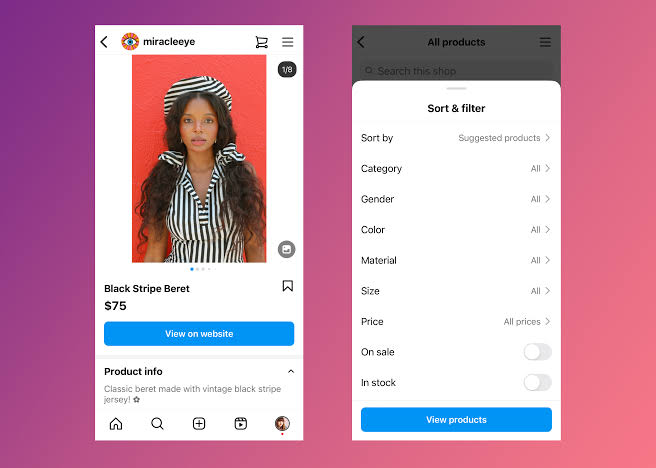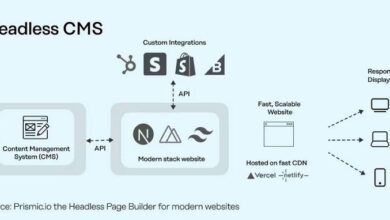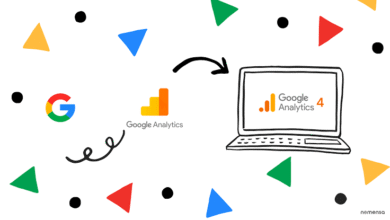5 Ways to Earn from Instagram as a Small Creator

Instagram has transformed from a simple photo-sharing app into a powerful platform where ordinary people can turn their creativity and passion into a real income stream. The beauty of Instagram lies in its accessibility – you don’t need to have millions of followers or celebrity status to start earning money from your content. In fact, some of the most successful creators on the platform are those who started small and built authentic relationships with their audiences.
The landscape of ways to earn from Instagram as a small creator has expanded dramatically in recent years, offering multiple opportunities for monetization that weren’t available just a few years ago. Whether you’re passionate about fitness, cooking, fashion, photography, or any other niche, there are proven ways to earn from Instagram that can help you supplement your income or even replace your full-time job.
Small creators, particularly those in the nano-influencer (1,000-10,000 followers) and micro-influencer (10,000-100,000 followers) categories, are actually in a unique position to succeed on Instagram. Research shows that nano-influencers generate 49.7% higher engagement rates than micro-influencers, while micro-influencers outperform mid-tier influencers by 46%. This means that your smaller, more engaged audience can be incredibly valuable to brands and businesses looking for authentic partnerships.
The key to success as a small creator lies in understanding that engagement and authenticity matter far more than follower count. Brands are increasingly recognizing that smaller creators often have more genuine connections with their audiences, leading to better conversion rates and more meaningful partnerships. With the right strategies and consistent effort, you can start monetizing your Instagram presence even with a modest following.
In this comprehensive article, we’ll explore five effective and accessible ways that small creators can start earning money on Instagram, from partnering with brands to using Instagram’s built-in monetization features, and everything in between.
5 Ways to Earn from Instagram as a Small Creator
These five methods represent the most accessible and proven strategies for small creators to start generating income on Instagram. Each approach requires different levels of investment and effort, allowing you to choose the methods that best align with your content style, audience, and goals. They include:
1. Partner with Brands for Sponsored Content
Sponsored content represents one of the most straightforward ways for small creators to earn money on Instagram. This involves promoting a brand’s product or service in exchange for payment, free products, or both. The beauty of sponsored content is that you don’t need millions of followers to get started – brands are increasingly recognizing the value of working with nano and micro-influencers who have highly engaged audiences.
Understanding Sponsored Content Earnings
The earning potential for small creators varies significantly based on follower count and engagement rates. Nano-influencers with 1,000-10,000 followers typically earn between $10-$100 per post, while micro-influencers with 10,000-50,000 followers can command $100-$500 per sponsored post. These rates can increase substantially for creators in specialized niches or those with exceptionally high engagement rates.
Read Next: GA4 Setup Guide for Non-tech Businesses
Finding Brand Partnerships
Small creators can approach brand partnerships in several ways. The most effective strategy is to start by reaching out to brands you genuinely love and use. This authenticity shines through in your content and makes your pitch more compelling. You can also join influencer marketplaces like Shopify Collabs, AspireIQ, or Creator.co, which connect creators with brands looking for partnerships.
Creating Effective Pitches
When reaching out to brands, personalization is crucial. Your pitch should demonstrate genuine knowledge of the brand and explain how your audience aligns with their target market. Include your engagement statistics, audience demographics, and examples of previous collaborations or high-performing content. A successful pitch typically includes a brief introduction, your value proposition, specific collaboration ideas, and your media kit or statistics.
Building Recurring Content Series
One of the most effective strategies for attracting brand partnerships is developing recurring content formats that brands can easily plug into. These might include “Get Ready With Me” videos, weekly product reviews, or “Day in My Life” content. Brands prefer working with creators who have established popular formats because it reduces the guesswork about how their product will be featured.
Maintaining Authenticity
The key to successful sponsored content is maintaining authenticity. Your audience follows you for your unique perspective and personality, so sponsored posts should feel natural and align with your usual content style. Always disclose partnerships clearly using Instagram’s paid partnership label and be honest about your experiences with products.
2. Use Instagram’s Built-in Monetization Features
Instagram has developed several native monetization tools specifically designed to help creators earn money directly from their audiences. These features are particularly valuable for small creators because they don’t require external partnerships or complex setups.
Instagram Live Badges
Instagram Live Badges allow viewers to purchase virtual badges during your live streams to show support. Badges come in three tiers: $0.99, $1.99, and $4.99, with each tier displaying different colored hearts next to the supporter’s name in the chat. Creators keep 100% of the badge revenue, minus platform fees (Google and Apple take approximately 30% for in-app purchases).
To be eligible for badges, you need to be at least 18 years old, have a professional Instagram account (Creator or Business), have a minimum of 10,000 followers, and meet Instagram’s community guidelines and monetization policies. The feature automatically activates when you go live if you’re eligible.
Instagram Subscriptions
Instagram Subscriptions allow creators to offer exclusive content to paying subscribers for a monthly fee. This feature is available to creators over 18 with at least 10,000 followers and a Creator account. Subscribers gain access to exclusive posts, stories, reels, live videos, and broadcast channels marked with a crown icon.
Subscriptions are currently available in numerous countries including the United States, United Kingdom, Canada, Australia, Brazil, and many European nations. This monetization method provides recurring monthly revenue, making it particularly valuable for creators who can consistently produce exclusive content.
Instagram Gifts
Instagram Gifts allow viewers to send virtual gifts on your Reels, which convert to real money. Each gift is worth a certain number of “stars,” with each star valued at $0.01 USD. So if you receive gifts worth 200 stars on a Reel, you’ll earn $2. While individual gift amounts may seem small, they can add up significantly as your content gains more views and engagement.
Read Next: How to Create a Short Video Marketing Strategy for Local Businesses
Setting Up Monetization Features
To access these features, you’ll need to convert your personal account to a Creator or Business account through your Instagram settings. The setup process involves reviewing terms and conditions, providing legal and tax information, and adding a payout method. You can track your earnings through the Professional Dashboard after each live stream or from your overall creator monetization summary.
3. Affiliate Marketing
Affiliate marketing involves promoting other companies’ products and earning a commission on sales made through your unique tracking links. This monetization method is particularly attractive for small creators because it doesn’t require a minimum follower count and can generate passive income over time.
How Affiliate Marketing Works
When you join an affiliate program, you receive unique tracking links for products you want to promote. When someone clicks your link and makes a purchase within a specified timeframe (usually 24 hours to 30 days), you earn a percentage of the sale. Commission rates typically range from 1% to 20%, depending on the product category and affiliate program.
Choosing Affiliate Programs
Popular affiliate programs for Instagram creators include Amazon Associates (1-20% commission), beauty brands like Paula’s Choice (7% commission), fashion retailers like Forever 21 (1% commission), and lifestyle brands like YesStyle (15% commission). When selecting programs, consider products you genuinely use and believe in, as authenticity is crucial for building trust with your audience.
Sharing Affiliate Content
You can promote affiliate products through various Instagram features including posts, stories, and reels. The key is to integrate product recommendations naturally into your content rather than making every post feel like an advertisement. Share honest reviews, demonstrate products in use, or include them in lifestyle content that provides value beyond the promotion.
Building Trust Through Authentic Recommendations
Success in affiliate marketing comes from building trust with your audience by only promoting products you genuinely like and use. Your followers can sense when recommendations are authentic versus purely transactional. Focus on products that align with your niche and content style, and always disclose affiliate relationships clearly using appropriate hashtags like #affiliate or #ad.
Maximizing Affiliate Earnings
To maximize your affiliate earnings, create content that drives action rather than just awareness. This might include tutorial videos showing how to use products, comparison posts between different options, or limited-time promotion announcements. Track which types of content and products generate the most clicks and conversions, then create more similar content.
4. Sell Your Own Products or Services
Creating and selling your own products or services gives you complete control over your income and allows you to capture the full value of your expertise and creativity. This approach can be particularly rewarding for small creators who have developed specialized knowledge or skills that their audience values.
Digital Products and Services
Digital offerings are often the easiest starting point for small creators because they require minimal upfront investment. Popular digital products include online courses, e-books, photography presets, digital planners, templates, and artwork. Services might include coaching sessions, virtual consultations, social media management, graphic design, or photography services.
Setting Up Instagram Shopping
Instagram Shopping allows you to tag products directly in your posts and stories, creating a seamless shopping experience for your followers. To set up Instagram Shopping, you need a business or creator account, a connected Facebook page, and a product catalog managed through Facebook Commerce Manager or an e-commerce platform like Shopify.
The setup process involves converting to a professional account, connecting to a Facebook page, creating a product catalog, signing up for Instagram Shopping, and waiting for approval (which typically takes a few days). Once approved, you can tag products in posts, stories, and reels, making it easy for followers to purchase directly through the app.
Content Strategies for Product Sales
Use various Instagram features to showcase your products effectively. Create behind-the-scenes content showing your creation process, use stories to highlight product features and benefits, and create reels demonstrating products in use. User-generated content from satisfied customers can be particularly powerful for building social proof and encouraging new purchases.
Pricing and Positioning
Research competitor pricing and consider your target audience’s spending capacity when setting prices. For services, consider offering different tiers or package options to accommodate various budgets. Remember that as a small creator, you can often provide more personalized service than larger competitors, which can justify premium pricing.
Making Purchasing Easy
Reduce friction in the buying process by using clear calls-to-action, link-in-bio tools like Linktree, and direct messaging for quick questions or custom orders. The easier you make it for followers to purchase, the more likely they are to convert from browsers to buyers.
5. Create and Sell Merchandise or Art
Merchandise and art sales allow creators to monetize their personal brand and artistic abilities while providing fans with tangible ways to support their favorite creators. This approach works particularly well for creators with strong visual aesthetics or memorable catchphrases and designs.
Read Next: How to Start an Online Store with No Tech Skills in 2025
Print-on-Demand Services
Print-on-demand platforms like Printify, Printful, and Teespring handle the production, printing, and shipping of your designs without requiring upfront inventory investment. These services typically offer products including t-shirts, hoodies, mugs, phone cases, stickers, tote bags, and home decor items.
The print-on-demand model is ideal for small creators because you only pay for products after they’re sold, eliminating inventory risk. Popular products for 2025 include unisex t-shirts, custom mugs, tote bags, phone cases, stickers, and personalized items.
Design and Branding Strategies
Successful merchandise often incorporates recognizable elements from your brand such as catchphrases, inside jokes with your community, visual elements from your content style, or motivational quotes related to your niche. The key is creating designs that your audience will want to wear or use while clearly connecting back to your brand.
Promoting Merchandise Creatively
Integrate merchandise promotion naturally into your content rather than making it feel overly promotional. Wear or use your products in regular content, create “merch drop” announcement posts, show the design process, and encourage user-generated content from customers wearing or using your products. Stories and reels are particularly effective for showcasing merchandise in action.
Artists and Photography Sales
For creators who are artists or photographers, Instagram provides an excellent platform to sell original work, prints, or digital downloads. Use high-quality images to showcase your work, provide behind-the-scenes content of your creative process, and offer various price points including original pieces, limited edition prints, and affordable digital downloads.
Building a Merchandise Strategy
Start with a few core designs and products to test market response before expanding your catalog. Pay attention to which designs generate the most engagement and comments, as these often translate to strong sales. Consider seasonal or limited-edition releases to create urgency and excitement among your audience.
Use Instagram Shopping features to tag merchandise in posts and stories, making purchasing seamless for followers. Connect your print-on-demand store to your Instagram shop to centralize the shopping experience.
Conclusion
The opportunities for small creators to earn money on Instagram have never been more diverse or accessible. From partnering with brands and using Instagram’s built-in monetization features to affiliate marketing, selling your own products, and creating merchandise, there are multiple pathways to generating income regardless of your follower count.
The key to success lies in understanding that authenticity and engagement are more valuable than raw follower numbers. Brands and audiences alike are drawn to creators who offer genuine value, whether through entertaining content, useful information, or authentic product recommendations. Small creators often have an advantage in building these genuine connections because they can interact more personally with their audiences.
Experimentation is crucial when starting your monetization journey. Try multiple methods to see what resonates best with your audience and aligns with your content style and personal goals. Some creators find success with sponsored content, others thrive with their own products, and many successful creators use a combination of several monetization strategies.
Building trust and engagement with your followers should always be your top priority. Focus on creating valuable content that serves your audience first, with monetization as a natural extension of the value you provide. Respond to comments and messages, engage with your community authentically, and maintain consistency in your posting schedule and content quality.
Remember that building a sustainable income on Instagram takes time and consistent effort. Start small, stay authentic to your voice and values, and be patient as you grow your audience and refine your monetization strategies. With dedication and the right approach, Instagram can indeed become a reliable source of income for small creators who are willing to put in the work and provide genuine value to their communities.
Frequently Asked Questions
1. How many followers do I need to start making money on Instagram?
You can start earning money on Instagram with as few as 1,000 engaged followers through sponsored content and affiliate marketing. For Instagram’s built-in monetization features like badges and subscriptions, you need at least 10,000 followers. However, engagement rates and audience quality are often more important than follower count when it comes to earning potential.
2. How much can small creators realistically earn on Instagram?
Earnings vary widely based on follower count, engagement rates, and monetization methods. Nano-influencers (1,000-10,000 followers) typically earn $10-$100 per sponsored post, while micro-influencers (10,000-50,000 followers) can earn $100-$500 per post[6][5]. With consistent effort across multiple income streams, small creators can potentially earn anywhere from a few hundred to several thousand dollars per month.
3. Do I need to pay taxes on money earned from Instagram?
Yes, income earned from Instagram is generally considered taxable income and should be reported to tax authorities in your country. This includes earnings from sponsored content, affiliate marketing, product sales, and Instagram’s monetization features. It’s advisable to keep detailed records of all income and expenses related to your Instagram activities and consult with a tax professional for specific guidance.
4. How long does it typically take to start earning money as a small Instagram creator?
The timeline varies significantly depending on your niche, content quality, consistency, and chosen monetization methods. Some creators start earning small amounts through affiliate marketing within their first few months, while building substantial income from sponsored content typically takes 6-12 months of consistent, high-quality posting. Success depends more on building genuine engagement with your audience than on rapid follower growth.



